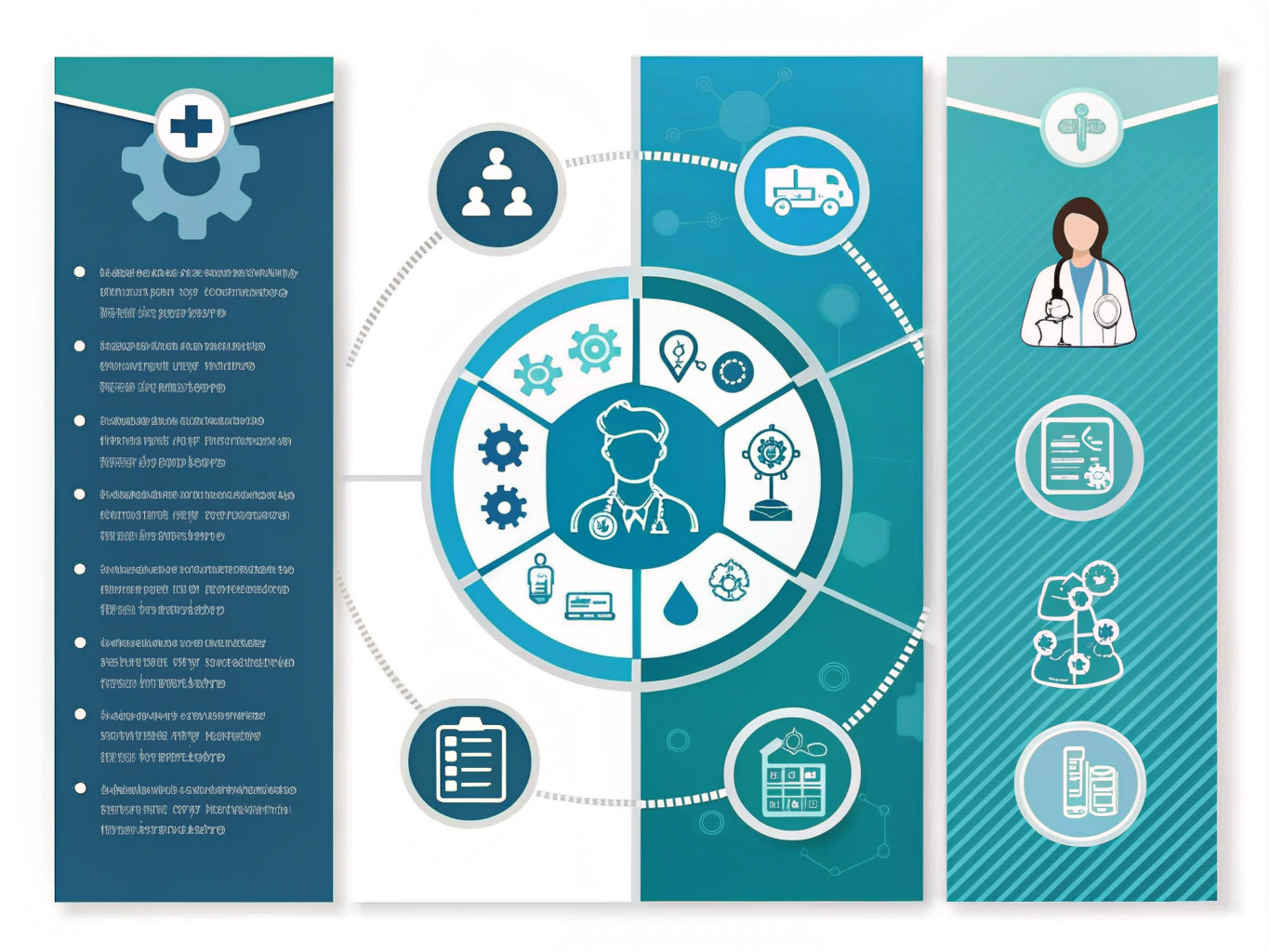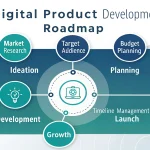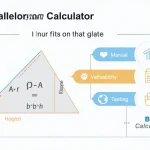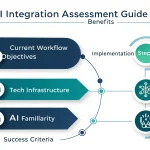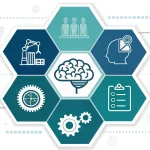Healthcare Program Management and Care Integration Guide Generator
Is this tool helpful?
How to Use the Healthcare Program Management and Care Integration Guide Generator
To effectively use this comprehensive guide generator for healthcare program management and care integration, follow these steps:
- Specific focus within the healthcare industry: Enter the area of healthcare you want to focus on. For example, you might input “Pediatric oncology departments” or “Rural primary care clinics.”
- Primary audience for the guide: Specify the main audience for your healthcare guide. This could be “Hospital administrators and oncology program directors” or “Rural healthcare providers and community health workers.”
- Specific healthcare programs or initiatives (Optional): List any specific programs or initiatives you want to address in the guide. For instance, you could enter “Childhood cancer survivorship programs” or “Telemedicine implementation for remote patient monitoring.”
- Click the “Generate Healthcare Guide” button to create your customized guide.
Once generated, you can review the guide, copy it to your clipboard, and use it as a valuable resource for your healthcare program management and care integration efforts.
Understanding the Healthcare Program Management and Care Integration Guide Generator
This innovative tool is designed to create tailored, comprehensive guides for healthcare professionals seeking to improve program management and care integration within their specific areas of focus. By leveraging user inputs and advanced algorithms, the generator produces detailed, actionable content that addresses the unique challenges and opportunities in various healthcare settings.
Purpose and Benefits
The primary purpose of this guide generator is to empower healthcare professionals with customized strategies and best practices for effective program management and care integration. Some key benefits include:
- Time-saving: Quickly generate comprehensive guides without extensive research
- Customization: Tailor content to specific healthcare sectors and target audiences
- Actionable insights: Gain practical strategies for program development, implementation, and evaluation
- Evidence-based approach: Access up-to-date information on best practices in healthcare management
- Holistic perspective: Address both program management and care integration aspects
The Importance of Effective Program Management in Healthcare
Effective program management is crucial for delivering high-quality healthcare services and improving patient outcomes. It encompasses various aspects, including needs assessments, program development, implementation, and evaluation. Let’s explore these components in detail:
Conducting Needs Assessments
Needs assessments are fundamental to understanding the health requirements of a population and identifying gaps in existing services. Key methodologies for conducting needs assessments include:
- Surveys and questionnaires
- Focus groups and interviews
- Analysis of health data and demographics
- Community mapping exercises
For example, a rural primary care clinic might conduct a needs assessment to identify the most prevalent chronic conditions in their community and determine the resources required to address them effectively.
Program Development and Implementation
Once needs are identified, healthcare organizations must develop and implement targeted programs. This process involves:
- Setting clear objectives and goals
- Defining strategies and action plans
- Allocating resources (human, financial, and technological)
- Engaging stakeholders and forming partnerships
- Establishing timelines and milestones
For instance, a pediatric oncology department might develop a childhood cancer survivorship program, focusing on long-term follow-up care, psychosocial support, and education for survivors and their families.
Monitoring and Evaluation
Continuous monitoring and evaluation are essential for ensuring program effectiveness and identifying areas for improvement. Key aspects include:
- Developing key performance indicators (KPIs)
- Implementing data collection and analysis systems
- Conducting regular program reviews and assessments
- Gathering feedback from patients, staff, and stakeholders
- Making data-driven decisions for program refinement
Care Integration: A Cornerstone of Modern Healthcare
Care integration is the coordinated delivery of healthcare services across different providers, settings, and levels of care. It aims to improve patient outcomes, enhance efficiency, and reduce healthcare costs. The guide generator incorporates various strategies for successful care integration, including:
Multidisciplinary Teams
Forming multidisciplinary teams is crucial for holistic patient care. These teams may include:
- Physicians and specialists
- Nurses and nurse practitioners
- Allied health professionals (e.g., physiotherapists, occupational therapists)
- Social workers and mental health professionals
- Care coordinators and case managers
Patient-Centered Approaches
Patient-centered care is at the heart of effective care integration. Key elements include:
- Shared decision-making between patients and healthcare providers
- Personalized care plans that consider patient preferences and goals
- Patient education and self-management support
- Family and caregiver involvement in care planning and delivery
Health Information Technology
Leveraging health information technology is crucial for seamless care integration. Important tools and systems include:
- Electronic Health Records (EHRs)
- Health Information Exchanges (HIEs)
- Telehealth and remote monitoring platforms
- Clinical decision support systems
- Patient portals and mobile health applications
The Role of Data Analytics in Program Management and Care Integration
Data analytics plays a pivotal role in improving healthcare program management and care integration. The guide generator emphasizes the importance of data-driven decision-making and provides insights on leveraging analytics effectively.
Key Applications of Data Analytics in Healthcare
- Population health management
- Risk stratification and predictive modeling
- Resource allocation and capacity planning
- Quality improvement and performance monitoring
- Patient flow optimization and care coordination
Tools and Techniques for Healthcare Data Analytics
The guide generator covers various tools and techniques for analyzing healthcare data, including:
- Statistical analysis software (e.g., SPSS, SAS, R)
- Machine learning algorithms for predictive analytics
- Data visualization tools (e.g., Tableau, Power BI)
- Natural language processing for unstructured data analysis
- Big data platforms for handling large-scale healthcare datasets
Addressing User Needs and Solving Specific Problems
The Healthcare Program Management and Care Integration Guide Generator is designed to address a wide range of user needs and solve specific problems in the healthcare industry. Let’s explore some examples:
Example 1: Improving Chronic Disease Management in Rural Settings
Problem: A rural primary care clinic is struggling to manage patients with multiple chronic conditions due to limited resources and geographical barriers.
Solution: The guide generator provides strategies for:
- Implementing a risk stratification model to identify high-risk patients
- Developing care coordination protocols for complex patients
- Leveraging telehealth solutions for remote monitoring and follow-up
- Establishing community partnerships for health education and support
- Integrating data analytics to track patient outcomes and program effectiveness
Example 2: Enhancing Pediatric Cancer Care Coordination
Problem: A pediatric oncology department aims to improve care coordination and long-term follow-up for childhood cancer survivors.
Solution: The generated guide offers recommendations for:
- Developing a multidisciplinary survivorship clinic model
- Creating personalized survivorship care plans
- Implementing a patient navigation program for seamless care transitions
- Utilizing health information technology for long-term patient tracking
- Establishing partnerships with community providers for ongoing care
Practical Applications and Use Cases
The Healthcare Program Management and Care Integration Guide Generator can be applied to various scenarios across the healthcare spectrum. Here are some illustrative use cases:
Use Case 1: Mental Health Integration in Primary Care
A large primary care network aims to integrate mental health services into their practice. The generated guide provides a roadmap for:
- Conducting a needs assessment to identify prevalent mental health issues
- Developing a collaborative care model with mental health professionals
- Implementing screening protocols for common mental health conditions
- Training primary care providers in basic mental health interventions
- Establishing referral pathways for specialized mental health services
- Utilizing data analytics to monitor program effectiveness and patient outcomes
Use Case 2: Improving Care Transitions for Elderly Patients
A hospital system seeks to reduce readmission rates and improve care transitions for elderly patients. The guide offers strategies for:
- Implementing a comprehensive discharge planning process
- Developing post-discharge follow-up protocols
- Establishing partnerships with home health agencies and skilled nursing facilities
- Utilizing telehealth for remote monitoring and support
- Implementing medication reconciliation programs
- Leveraging predictive analytics to identify high-risk patients for targeted interventions
Frequently Asked Questions (FAQ)
Q1: How often should I update my healthcare program management strategies?
A1: It’s recommended to review and update your program management strategies annually or whenever significant changes occur in your healthcare environment, such as new regulations, technological advancements, or shifts in population health needs.
Q2: What are some key indicators of successful care integration?
A2: Indicators of successful care integration include improved patient outcomes, reduced hospital readmissions, increased patient satisfaction, better coordination among healthcare providers, and more efficient use of resources.
Q3: How can small healthcare organizations with limited resources implement effective program management?
A3: Small organizations can start by focusing on high-priority areas, leveraging existing resources, forming partnerships with other healthcare providers or community organizations, and utilizing cost-effective technologies like open-source data analytics tools.
Q4: What role does patient engagement play in care integration?
A4: Patient engagement is crucial for successful care integration. Engaged patients are more likely to adhere to treatment plans, participate in shared decision-making, and provide valuable feedback for improving care processes.
Q5: How can healthcare organizations measure the return on investment (ROI) of their program management and care integration efforts?
A5: ROI can be measured by tracking various metrics, such as reduced healthcare costs, improved clinical outcomes, increased patient satisfaction scores, reduced staff turnover, and enhanced operational efficiency.
Q6: What are some common challenges in implementing care integration, and how can they be overcome?
A6: Common challenges include resistance to change, interoperability issues with health information systems, and organizational silos. These can be addressed through effective change management strategies, investing in compatible technology solutions, and fostering a culture of collaboration across departments.
Q7: How can data analytics be used to improve health equity in program management?
A7: Data analytics can help identify disparities in healthcare access and outcomes among different population groups. This information can be used to develop targeted interventions, allocate resources more equitably, and monitor the effectiveness of health equity initiatives.
Q8: What are some innovative approaches to care integration that healthcare organizations should consider?
A8: Innovative approaches include virtual integrated care teams, AI-powered care coordination platforms, community health worker programs, and value-based care models that incentivize integrated care delivery.
Q9: How can healthcare organizations ensure patient privacy and data security while implementing integrated care models?
A9: Organizations should implement robust data governance policies, use secure health information exchange platforms, conduct regular security audits, and provide ongoing training to staff on privacy and security best practices.
Q10: What role do social determinants of health play in program management and care integration?
A10: Social determinants of health are crucial factors to consider in program management and care integration. Healthcare organizations should assess and address these factors through community partnerships, screening tools, and targeted interventions to improve overall health outcomes.
Important Disclaimer
The calculations, results, and content provided by our tools are not guaranteed to be accurate, complete, or reliable. Users are responsible for verifying and interpreting the results. Our content and tools may contain errors, biases, or inconsistencies. We reserve the right to save inputs and outputs from our tools for the purposes of error debugging, bias identification, and performance improvement. External companies providing AI models used in our tools may also save and process data in accordance with their own policies. By using our tools, you consent to this data collection and processing. We reserve the right to limit the usage of our tools based on current usability factors. By using our tools, you acknowledge that you have read, understood, and agreed to this disclaimer. You accept the inherent risks and limitations associated with the use of our tools and services.
